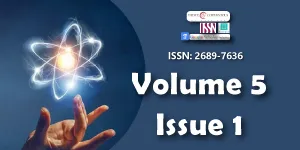Drag force through gases and plasma
Main Article Content
Abstract
The drag force in a gas (previously derived by Stokes and Rayleigh) is derived by means of the molecular kinetics (transport equation of the momentum). Two regimes of resistance to motion are identified, governed by the relation of the velocity to the thermal (molecular) velocity. They correspond to the molecular movement, for small velocities, or to the hydrodynamic motion for high velocities. In the former case sound waves are not excited, and energy is dissipated by viscosity (friction), while in the latter case the energy is dissipated by the excitation of the sound waves. Also, the treatment is applied to the plasma. It is shown that in usual plasmas it is unlikely that the body motion excites plasmons.
Downloads
Article Details
Copyright (c) 2022 M Apostol.

This work is licensed under a Creative Commons Attribution 4.0 International License.
Licensing and protecting the author rights is the central aim and core of the publishing business. Peertechz dedicates itself in making it easier for people to share and build upon the work of others while maintaining consistency with the rules of copyright. Peertechz licensing terms are formulated to facilitate reuse of the manuscripts published in journals to take maximum advantage of Open Access publication and for the purpose of disseminating knowledge.
We support 'libre' open access, which defines Open Access in true terms as free of charge online access along with usage rights. The usage rights are granted through the use of specific Creative Commons license.
Peertechz accomplice with- [CC BY 4.0]
Explanation
'CC' stands for Creative Commons license. 'BY' symbolizes that users have provided attribution to the creator that the published manuscripts can be used or shared. This license allows for redistribution, commercial and non-commercial, as long as it is passed along unchanged and in whole, with credit to the author.
Please take in notification that Creative Commons user licenses are non-revocable. We recommend authors to check if their funding body requires a specific license.
With this license, the authors are allowed that after publishing with Peertechz, they can share their research by posting a free draft copy of their article to any repository or website.
'CC BY' license observance:
|
License Name |
Permission to read and download |
Permission to display in a repository |
Permission to translate |
Commercial uses of manuscript |
|
CC BY 4.0 |
Yes |
Yes |
Yes |
Yes |
The authors please note that Creative Commons license is focused on making creative works available for discovery and reuse. Creative Commons licenses provide an alternative to standard copyrights, allowing authors to specify ways that their works can be used without having to grant permission for each individual request. Others who want to reserve all of their rights under copyright law should not use CC licenses.
Lamb H (1932) Hydrodynamics. Cambridge University Press, Cambridge, 1-8. Link: https://bit.ly/3rQnMRY
French AP (1970) Newtonian Mechanics, W. W. Norton&Co., Inc., NY.
Batchelor G (2000) An Introduction to Fluid Dynamics. Cambridge University Press, Cambridge. Link: https://bit.ly/3fSDAxV
Landau L, Lifshitz E (2004) Course of Theoretical Physics, Fluid Mechanics, Elsevier, Oxford 6. Link: https://bit.ly/3qY0gU3
Falkovich G (2011) Fluid Mechanics. Cambridge University Press, Cambridge. Link: https://bit.ly/32uVUdF
Stokes GG (1851) On the effect of internal friction of fluids on the motion of pendulums. Trans. Cambridge Phil Soc 9. Link: https://bit.ly/3AsndSi
Strutt JW (1876) 3rd Baron Rayleigh. On the resistance of fluids, Phil. Mag. II 430.

